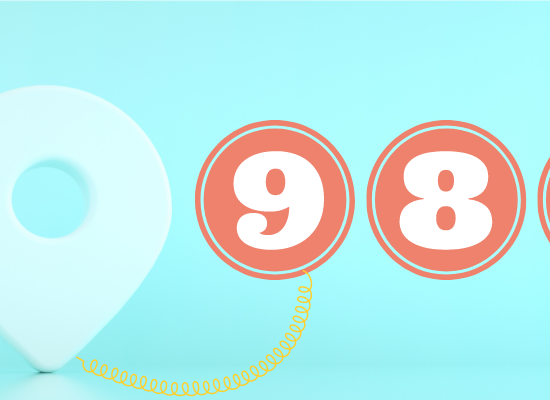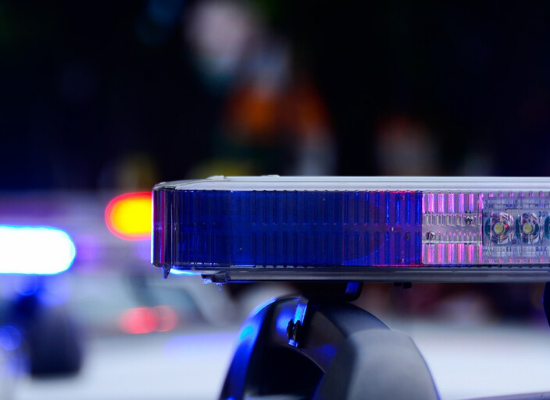
Stephanie Hepburn is a writer in New Orleans. She is the editor in chief of #CrisisTalk. You can reach her at .
In anticipation of 988—the three-digit number for mental health, substance use, and suicidal crisis telecom companies must make live by July 16, 2022—communities throughout the United States are examining their crisis systems. “They want to ensure there are rapid and appropriate responses in place that match people’s needs,” says Amy Watson, Ph.D., professor of social work in the Helen Bader School of Social Welfare at the University of Wisconsin. She’s also the president of CIT International. The Crisis Intervention Team model is a first-responder, police-based crisis intervention designed to reduce the role of law enforcement in behavioral health crisis response.
However, as leaders tighten their lens on behavioral health and quality of life crises in their community, there’s a glaring concern they must also simultaneously address: workforce shortages. Dr. Watson says the solution isn’t simply to increase staff in existing positions but rather to develop a community behavioral health crisis responder role. “That means identifying the skills needed to best resolve crises,” she notes, “and make sure there’s an accessible career path for people with a diversity of lived experience.”
In behavioral health, the term “lived experience” is often synonymous with people who have faced mental health or substance use challenges. “That’s a vital but narrow perspective,” says Dr. Watson. “There are many additional experiences—like being from a disadvantaged or marginalized population—that would be valuable to this role and can help provide a better, more culturally competent crisis response.” This includes the need for crisis responders who are Black, Hispanic, American Indian, have been incarcerated, experienced houselessness, identity as LGBTQ, are veterans, or have developmental disabilities.
Non-law enforcement responses to behavioral health and quality of life concerns—like the need for food and shelter—are critical for diverting people from the emergency department and jail. And because interactions are with civilian responders and not police, it can be far safer for people in crisis, especially among marginalized populations at risk of a police interaction turning deadly. Of people killed in the United States by a police officer in the line of duty since January 1, 2015, 24% were Black, 16% were Hispanic, and 23% were identified as having a mental illness.
In Olympia, Washington, the Thurston County 911 communication center can pass low-level calls—where a person is likely experiencing a behavioral health or quality of life challenge—to the city’s Crisis Response Unit. The unit is made up of civilian crisis responders. Some of the crisis interventionists, notes Dr. Watson, have lived experience with behavioral health challenges and incarceration. “They’ve been there and navigated the behavioral health and criminal justice systems,” she says.
Lived experience concordance, Dr. Watson points out, fosters trust between the crisis responder and the person in crisis. Trust, she says, might be the most critical element in a crisis response. At least, that’s the feedback she and her colleagues have received from cross-sectoral panels they’ve convened at conferences, including the 2021 Law Enforcement and Public Health Conference. Among the participants were people with lived behavioral health expertise and those who work in 911 emergency response, law enforcement, behavioral health, or emergency medicine. “We walked through different scenarios that might be a behavioral health crisis,” she says, “and asked them, ‘What are the skills you need?’”
Panel participants said what was most crucial to helping a person in crisis was developing trust, engaging them, and making them feel safe. “You don’t need a master’s degree to do that,” says Dr. Watson. In fact, a clinical approach may be a deterrent, particularly among populations who’ve faced systemic racism or biases or otherwise had negative experiences with the medical or mental health systems. Both, she notes, can dissuade people from calling 911, or even a non-emergency number, for fear that they’ll get a police response or be taken to the emergency department.
In Oakland, California, people in the community aren’t just looking to remove police from the city’s behavioral health crisis response but also clinical professionals. In response, the city is rolling out a pilot program, operated under the fire department, that prioritizes lived experience over formal education for its civilian crisis responder teams. Melinda Drayton, Oakland’s deputy fire chief, told NPR that “…the community was crystal clear and has continued to be crystal clear that they do not want a licensed social worker as part of the street team.” Instead, people want “resident-centered responses,” Cathy Leonard told The Appeal. Leonard is a steering committee member of the Coalition for Police Accountability. The pilot is called Mobile Assistance Community Responders of Oakland, MACRO for short.
Dr. Watson says that while street response team members don’t need to be behavioral health clinicians, just like Emergency Medical Technicians, they must have immediate access to them. She points out that street-based crisis response isn’t new, and there are harm reduction, anti-violence, and community responder models to draw from. “What a person in crisis typically needs,” she says, “is for someone to engage with them, build trust, stabilize the situation, and quickly connect them with services and supports.”
For crisis responders to be most effective, Dr. Watson says teams should include people with similar backgrounds as the people they serve. That means having responders with diverse perspectives, including those who’ve had first-hand experience with houselessness, incarceration, or who are members of an underserved, marginalized, or at-risk population. Training community members to become crisis responders also helps increase people’s access to rapid crisis response in areas where travel times pose a challenge. “Many rural communities just don’t have the workforce to run mobile crisis teams 24 hours a day, seven days a week,” points out Dr. Watson. Increasing crisis responders within the community, giving them a tablet or other means to reach a clinician, would quickly alleviate pressure on law enforcement and mobile crisis teams.
During the pandemic, the crisis responder role of connecting people to services and supports has taken on broader meaning; they’ve helped fill gaps left by closures and reduced capacity of behavioral health facilities and public transportation. Crisis responders at the Crisis Response Unit in Olympia joked in July 2020 that they’d become “‘CRU-ber’” because they often spent their time driving people to doctor’s appointments, methadone clinics, and city shelters.
Dr. Watson states most communities need to change how they perceive crisis response. She and her co-authors recently wrote a piece for Health Affairs, stating that crisis response to behavioral health and quality of life crises should be “aid and treatment, not coercion and control.” Unfortunately, law enforcement, which has long been the default mental health responder, tends to fall back on the latter. However, last month, Dr. Margie Balfour told us that law enforcement culture, just like that of behavioral health, isn’t stagnant. In Tucson, she has witnessed police culture become increasingly public health focused. The key, she noted, is partnership and a strong connection between first responders and behavioral health crisis services at every potential entry point.
Communities like Los Angeles and Harris counties, Austin, and Tucson, are working to improve linkages between their local 911 public safety answering points and behavioral health crisis services. In some cases, that includes physical or virtual co-location of call counselors at 911 call centers who are integrated into the PSAP’s computer-aided dispatch system, commonly called CAD. However, in most communities, PSAPs still have to telephonically transfer calls to behavioral health call centers, often resulting in long wait times and dropped calls.
Street-based crisis response, says Dr. Watson, is a complement to the behavioral health crisis continuum and first responders. For example, in Atlanta, two-person harm reduction teams at the Policing Alternatives and Diversion Initiative, PAD for short, do extensive outreach with populations at risk of interacting with law enforcement because of poverty, houselessness, survival activities, or behavioral health challenges. The in-person teams provide pre-arrest diversion and respond and engage people referred to PAD through the Atlanta 311 non-emergency service line, which launched in January. The harm reduction teams help address a person’s immediate needs, whether food, clean clothing, or helping them navigate the healthcare system and connect to service providers.
To become a harm reduction specialist, applicants must have a bachelor’s degree in mental health—or equivalent experience—and two years of experience in case management, outreach, or community-based mental health services to people experiencing houselessness or engaged in survival activities. The initiative explicitly encourages people with lived experience of incarceration, recovery, houselessness, and those who identify as Trans or LGBQ to apply.
Last year, SAMHSA published in its national guidelines that a best practice in operating mobile crisis team services is incorporating peers in the mobile crisis team. The peer support specialist often takes the lead on engagement and should have lived experience similar to that of the population they serve: “Peers should be hired with attention to common characteristics such as gender, race, primary language, ethnicity, religion, veteran status, lived experiences, and age.”
Shared lived experience, says Dr. Watson, helps crisis responders develop a connection with and foster hope in the person in crisis. She tells the story of a mom in Chicago who dialed 911 and reported that her son was off of his medication and had locked himself in the basement. She’d told the dispatcher that her son threatened her and said he had a gun. Soon, police vehicles filled the street, including an armored SWAT truck. The officers got out and deployed their rifles and shields.
Elías Román, the family’s neighbor and a Little Village anti-violence worker, watched the scene unfold. He’d known the young man for years and knew of his mental health struggles. After an hours-long standoff, the officers allowed Román to intervene, quickly diffusing a volatile situation. The 20-year-old came out and went in an ambulance to St. Anthony Hospital. “Román isn’t a mental health professional,” points out Dr. Watson. “He’s a street-based anti-violence worker in the community who the young man knew and trusted,” she said. “In a crisis, that’s what matters.”









